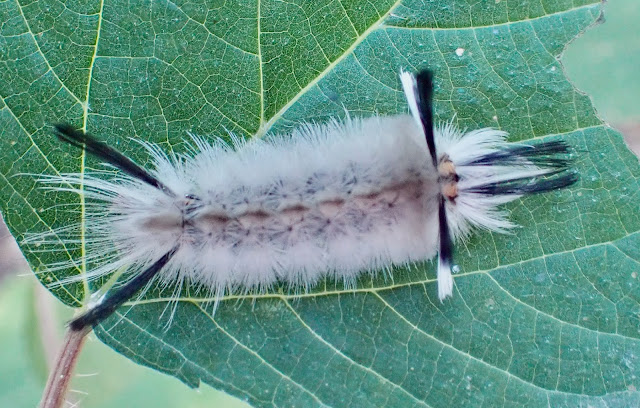One of the stars of the field trip last Friday was this cute little hickory tussock moth, (Lophocampa caryae). We found them on a variety of leaves, conveniently placed at the height of a WOLF Student. The name is a bit confusing as it's host plants are hickory, pecan and walnut, but they will also feed on ash, elm, oak and willow.
 |
| Viewed from above |
 |
| Just hatched- Charlie Eiseman |
They are really cute when they first emerge, all yellow and juicy as captured by Charlie Eiseman. Like most caterpillars, they munch on their eggshells to get a quick snack before eating their veggies.
 |
| Gregarious young cats - Mathew Priebe |
Now they get serious about their leaf diet, clustered together munching until there is a mere skeleton remaining. Later instars wander off and are solitary like the ones we found today. They will feed until ready to pupate in the fall.
While it looks cute and fuzzy, don't pet it. The hairs cause a rash (called a contact dermatitis) in many people. It is caused by a urushiol
oil similar to that produced by poison ivy. In addition, those hairs have microscopic barbs and if you get them on your hands and touch sensitive tissues like your eyes it can cause serious pain.
 |
| Hickory Tussock Moth - Tom Murray CC |
